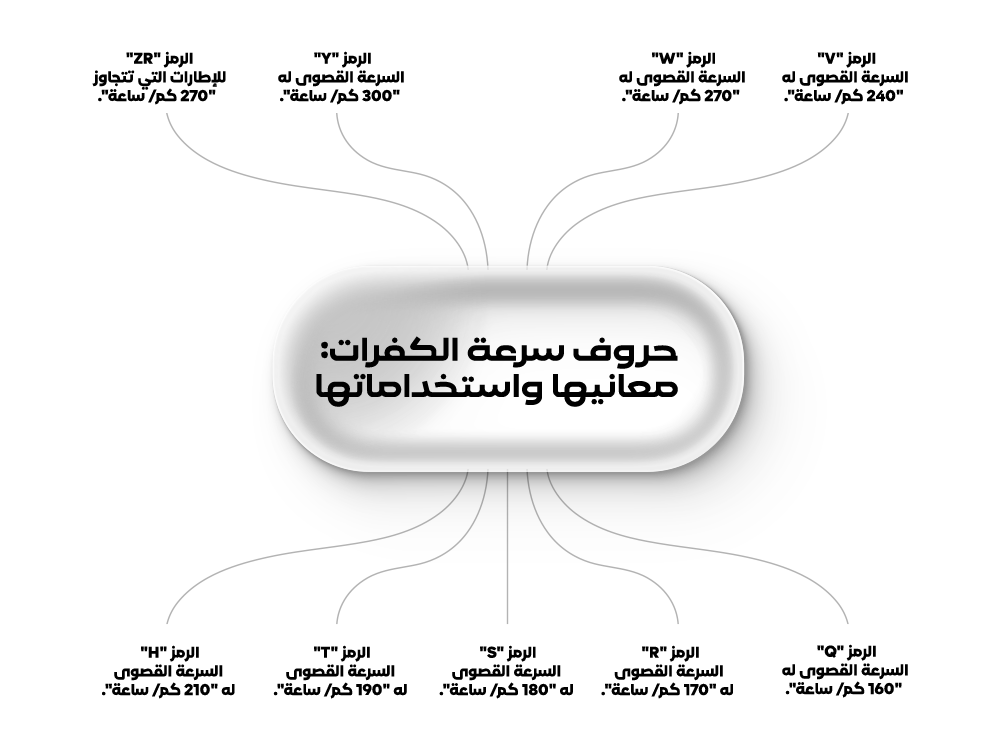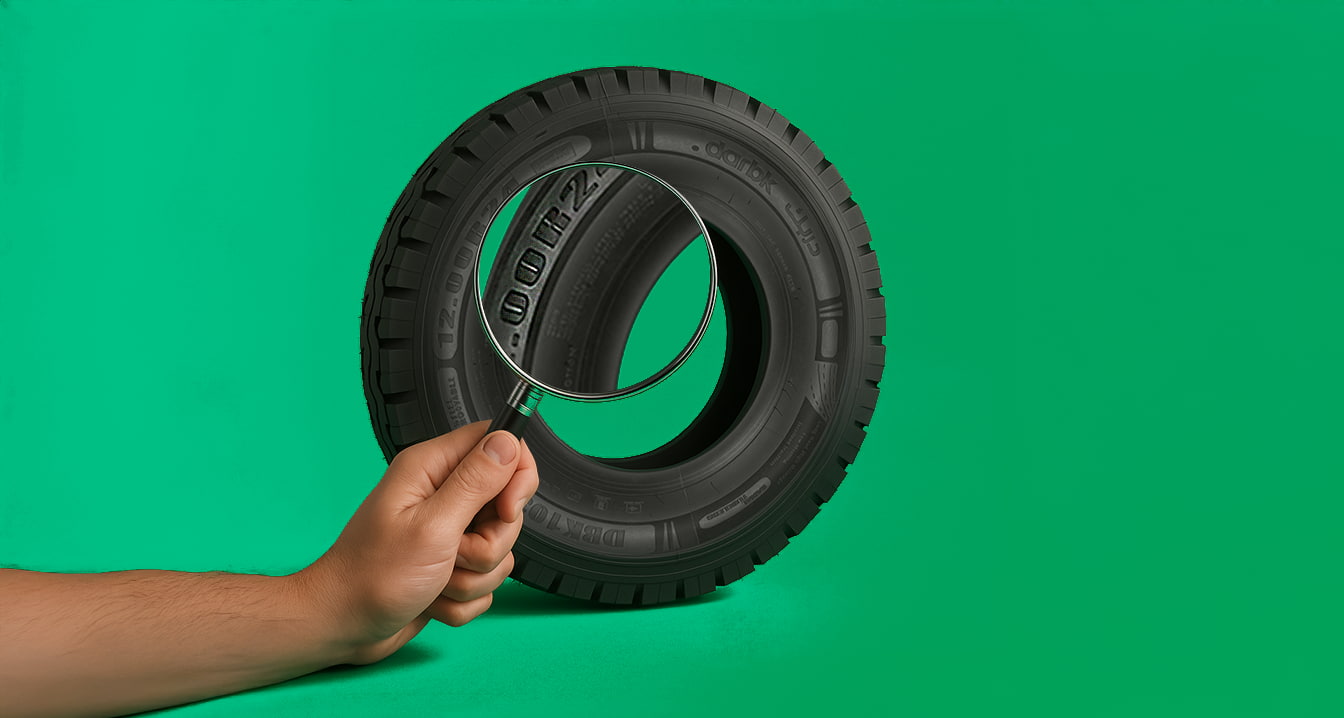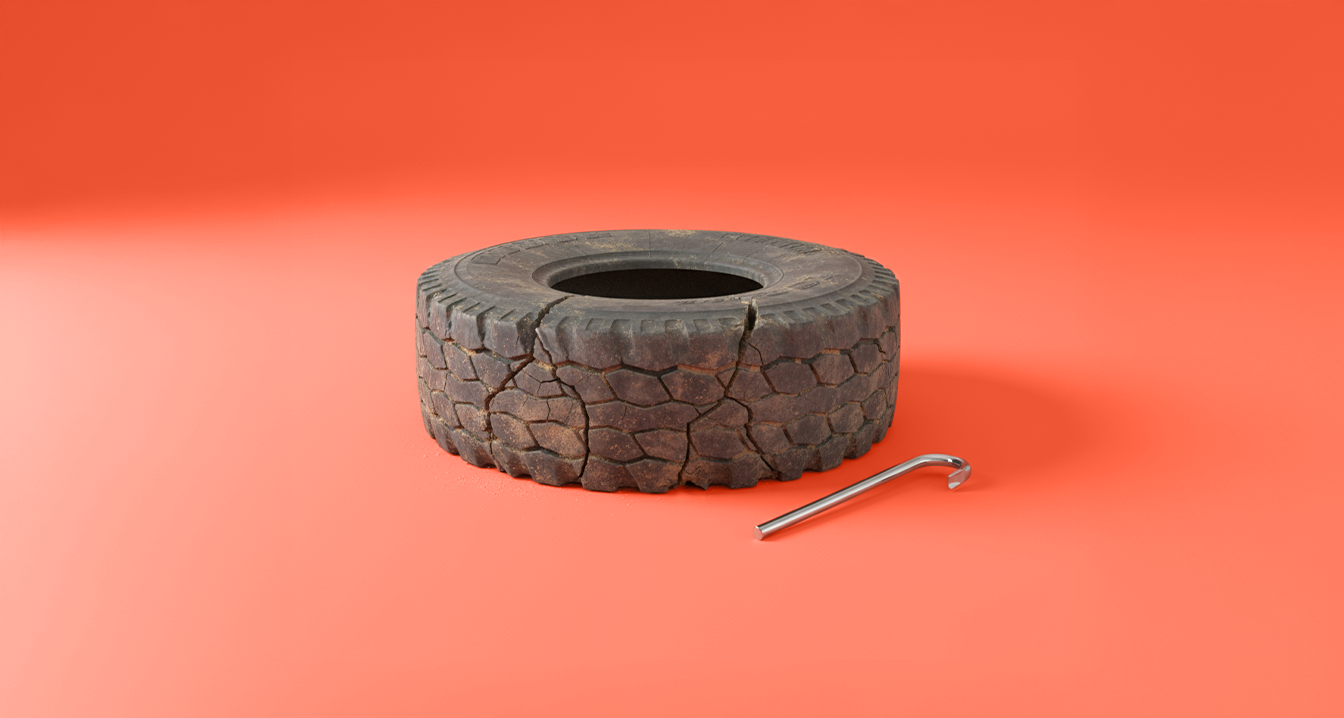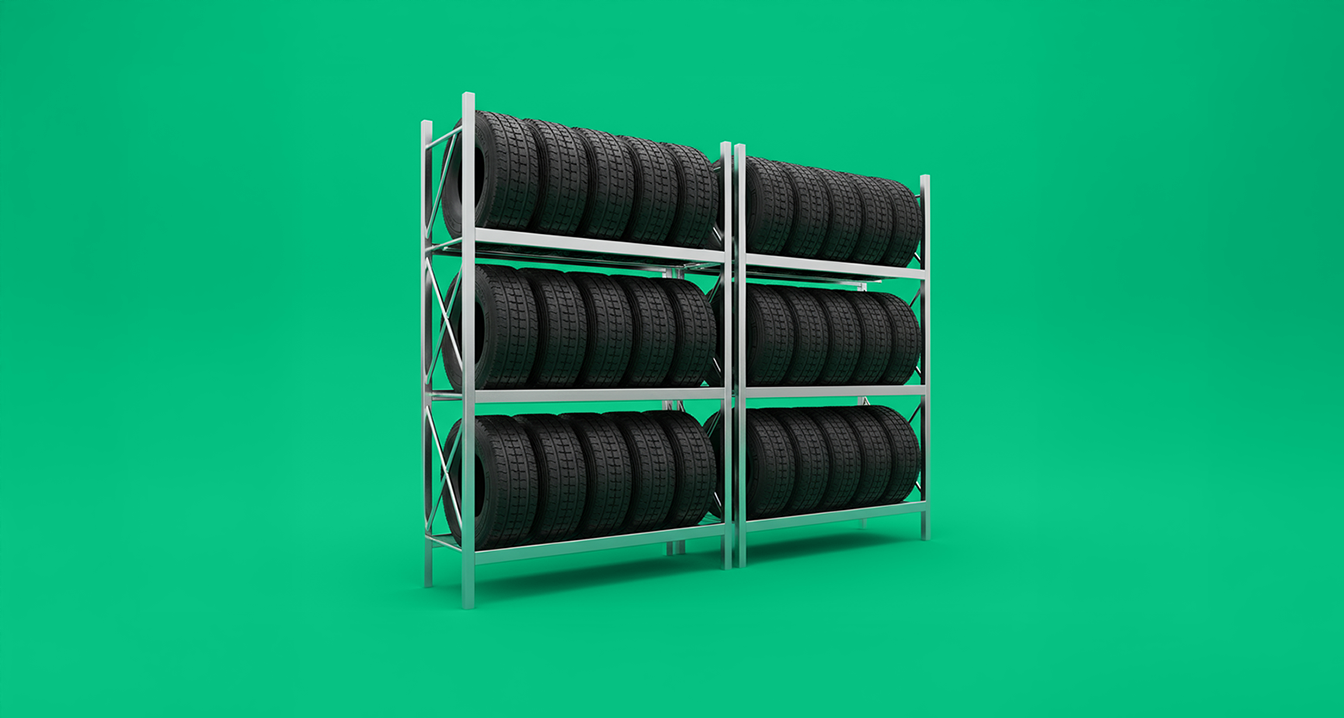Have you ever looked at your vehicle's rims and noticed mysterious letters like “H, V, or W” engraved on your tires?
These letters are the wheel speed letters that carry important symbols about your vehicle's performance on the road and the tire's ability to withstand high speeds safely.
The question now is, what happens if you're driving fast on the highway when your tires aren't designed for such speeds?
Here is the danger, because the speed of the tires is determined by these small symbols to ensure your safety and the safety of those with you on the journey. Each letter represents the maximum speed that the tire can withstand without losing its efficiency or exposing you to the risk of explosion.
In this article, we will take you on an interesting journey to discover the meanings and uses of tire speed letters, so that you can choose the best tire for your vehicle.
Where did the tire speed rating story begin?
In the past, there was no standard that specified the maximum safe speed for tires, and there were no guarantees that your tires would withstand the speed at which they were traveling.
This has led to terrible accidents, with tires suddenly exploding at high speeds.
By the beginning of the sixties, safety experts at the European Tire Organization decided to put an end to this chaos and create the speed rating system we know today.
The “ETRTO” system has become the global language spoken by all tire manufacturers. It is based on a set of letters, and each letter stands for its maximum speed rating.
The speed rating of tires: the safety shield that many people do not know
Tire codes represent a precise safety system and may be the difference between a safe journey and a tragic accident. In other words, tire speed ratings are a performance ID for a tire, telling you the maximum speed a tire can safely and stably withstand.
As a driver, these codes help you choose the perfect tire for your vehicle and driving style, and ensure that you drive within a safe speed range. Each tire has been extensively tested to withstand specified speed pressures, with grip and stability on the road.
Most importantly, these ratings act as a protective barrier against the most dangerous road scenarios.”Tire explosion“Because a tire that is not designed to withstand high speeds is subject to excessive friction, overheating, and then sudden collapse that is difficult to control, especially on highways.
The European Tire Organization (ETRTO) states that speed ratings are not just letters on a tire, but a basic safety standard that determines the maximum speed a tire can withstand without losing its efficiency.
Explain tire speed codes
Now, let's explain in this table the symbols of the covers and the corresponding maximum speed limit:

The “Q” code has a maximum speed of “160 km/h”.
The “R” code has a maximum speed of “170 km/h”.
The “S” symbol has a maximum speed of “180 km/h”.
The “T” symbol has a maximum speed of “190 km/h”.
The “H” symbol has a maximum speed of “210 km/h”.
The “V” symbol has a maximum speed of “240 km/h”.
The “W” symbol has a maximum speed of “270 km/h”.
The “Y” symbol has a maximum speed of “300 km/h”.
The “ZR” code has a maximum speed of more than 240 km/h.”
Rigorous tests: How does your vehicle tire earn its speed rating?
Now you're probably wondering how tires get that small letter that indicates their maximum speed? This is the result of a series of careful tests conducted in sophisticated laboratories.
The most important tests that determine the letters of the speed of cases are as follows:
- The speed test is under pressure, in which the tire is gradually accelerated while exposing it to heavy loads in order to simulate extreme driving conditions and ensure that it remains stable even at high speeds.
- Temperature testing, in which temperatures are raised to simulate hot road conditions, while monitoring any distortions or weakness in the tire structure due to heat.
- The long endurance test, in which the tire is tested for extended periods to ensure that it does not lose its efficiency with continued use.
These tests are a guarantee from the manufacturer that your vehicle's tires are designed to withstand the specified speed limit safely, even in the most difficult conditions.
Experts from the European Transport Safety Authority confirm that a tire that does not pass speed, heat and endurance tests cannot be put on the market. These tests are the first line of defense against accidents.
Where can you read the tire speed rating?
You can read the tire speed letters on the side of the vehicle tire, at the end of the tire size information.
For example, if the tire has the code P215/65715 95H, it has an “H” speed rating, which does not exceed 210 km/h.
You can also find the tire speed rating in the owner's manual, the left side of the door frame, the glove compartment door and the fuel tank cover.
The most important factors affecting the choice of a tire based on the speed code
The tire speed rating is selected based on several factors, which can be summarized as follows:
- Driving style
If you're the type who prefers to drive at high speeds on highways, tires with a higher speed symbol such as “V or Z” provide you with better performance and stability at higher speeds.
If you prefer to drive at moderate speeds, tires with a lower speed symbol such as “H or T” are suitable.
Also, remember that driving at consistently high speeds may cause faster tire wear.
- Speed rating
The tire speed symbol represents the maximum speed that a tire can safely withstand, so you should choose tires with the appropriate speed rating for your vehicle. It is preferable to choose tires with a higher rating than the maximum speed that the vehicle travels regularly.
- Driving comfort
Tires with a higher speed code may be stiffer and provide better handling on the road, but may be less comfortable to drive on rough roads.
- Vehicle manufacturer's recommendations
Look for the recommended speed code for your vehicle in the owner's manual or on the tire sticker on the vehicle.
- Your budget
Also keep in mind that tires with a higher speed rating may be more expensive compared to other tires.
Using tires with a higher speed rating: is it a safe option?
Of course, using tires with a higher speed rating than recommended for your vehicle is a safe and even beneficial option in driving conditions in Saudi Arabia, but make sure the tire size matches the vehicle specifications.
You will get a range of features, the most important of which are:
- Better tolerance to high temperatures on highways.
- Greater stability at higher speeds.
- Longer tire life Because it can carry lower loads at normal speeds.
The vital relationship between load index and tire speed rating
It is not possible to understand the performance of a tire in an integrated manner without linking the load index “Weight bearing capacity” and the speed rating “Endurance at high speeds”. These two factors are complementary to each other to ensure your safety on the road.
If the tire is strong and carries heavy weights, but is not designed for high speeds, it will be dangerous on highways, and vice versa. Therefore, the tire should be balanced, able to withstand the weight of your vehicle and maintain its stability at maximum speeds.
The right choice of these two indicators means: better driving control, more efficient braking force, longer tire life and peace of mind while traveling.
So, make sure when Buying new tires Its specifications match the weight of your vehicle, your usual driving speeds, weather conditions and the road on which you drive.
The load index and the speed rating are two sides of the same coin. It is not enough for a tire to withstand weight if it is not able to withstand high speeds.
The effect of tire speed rating on fuel consumption
The tire speed rating not only affects the maximum safe speed you can drive at, but also directly affects fuel consumption. How does this happen:
Highly rated tires are designed to withstand high speed pressures, making them stiffer in their construction by using stronger and thicker materials. This stiffness gives better stability at maximum speeds, but increases rolling resistance, meaning that the engine needs to make more effort to move the wheels, which increases fuel consumption by higher rates compared to lower rated tires.
So when do fast tires become uneconomical? If you're using your vehicle at moderate speeds, choosing “H” or “T” rated tires will be more fuel-efficient because they:
- They are made of more flexible materials, so their resistance to the road is reduced.
- It has a lighter design, reducing the burden on the vehicle engine.
- It produces less heat during normal driving, thus maintaining The ideal air pressure.
Based on the above, you can achieve a balance between speed and economy by avoiding overrating speed unless you drive at high speeds regularly, choosing tires that are highly fuel-efficient, and keeping air pressure as recommended by the manufacturer.
The bottom line is that the higher the speed, the greater the durability and stability, but at the expense of comfort and fuel economy. Therefore, choose the tire that matches your real driving style, not the maximum specifications that you may never use.
6 common mistakes about tire speed codes
Specialists warn of a number of common mistakes made by some drivers regarding the speed letters of tires, including:
- The belief that the wheel speed letters are just random symbols has no importance, even though they represent the maximum safe speed limit for a tire.
- The belief that a higher tire speed rating means a higher weight bearing (the load index).
- Ignore tire symbols when replacing them. This affects road safety and security levels.
- Choose tires with low speed codes to save money. These tires are not able to withstand high speeds and may put you at risk.
- The speed code does not match driving conditions. For example, you may need tires with higher speed codes in the summer or on highways.
- Exceed the speed limit of your speed code, even if you are driving in good conditions.
Now, how is the best way to deal with tire damage or aging over time, as their ability to withstand high speeds decreases even if they have a high speed rating?
It is normal for wear, cracking and chipping in the tread to weaken the tire structure and make it unable to withstand high pressures while driving fast.
In any case, high speeds should be avoided with worn or damaged tires because they heat up more quickly, increasing the risk of explosion. Damage also reduces the effectiveness of the tread, prolongs stopping distance and reduces stability in turns.
You should also check your tires regularly every month or Before long trips, and replace it immediately if you notice excessive wear, cracks or bulges, even if the tire has a high speed rating, while adhering to careful driving at moderate speeds to avoid accidents.
You should also reduce the speed gradually and avoid sudden braking or sharp turns if you find yourself driving at a higher speed than your tire rating. Remember that exceeding the specified speed even for a short time may cause internal damage to the tire that is not visible to the naked eye.







